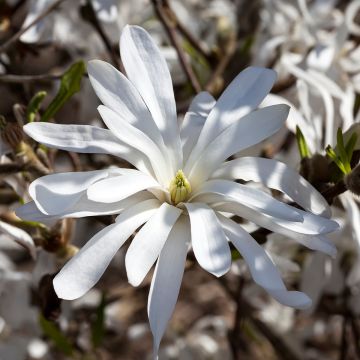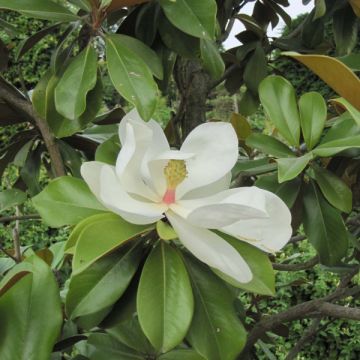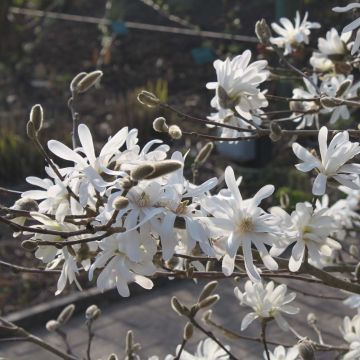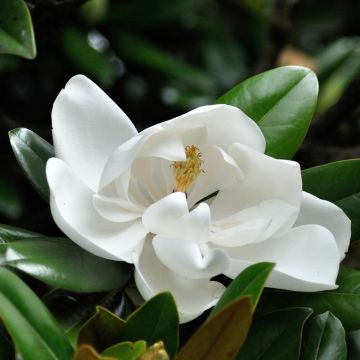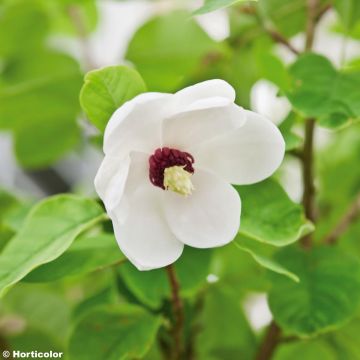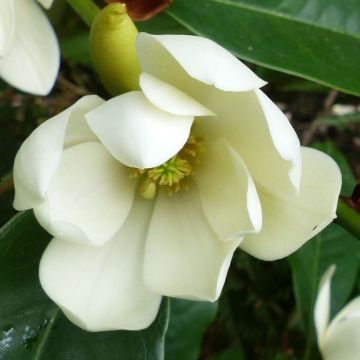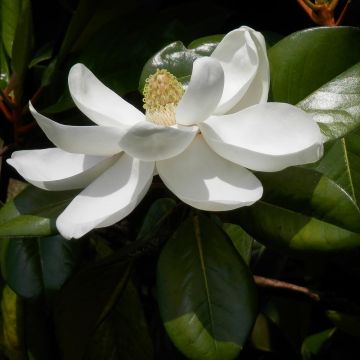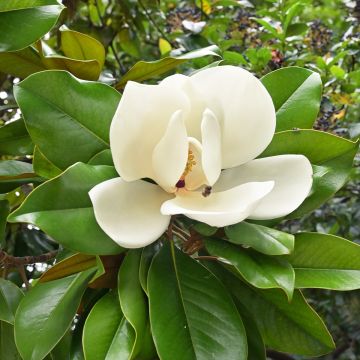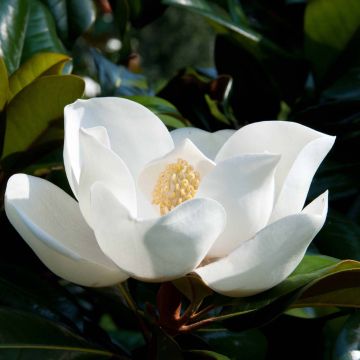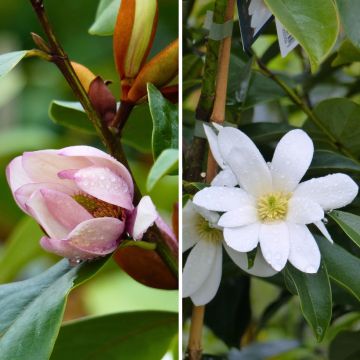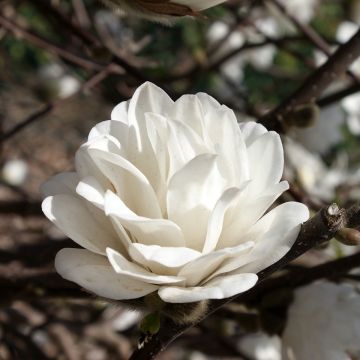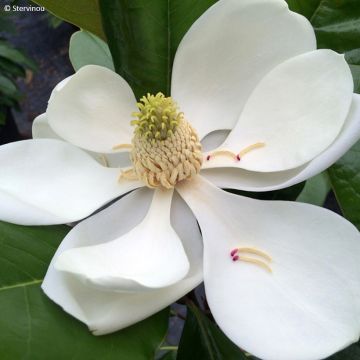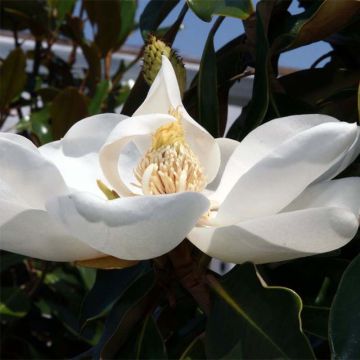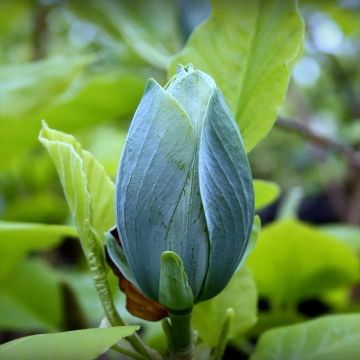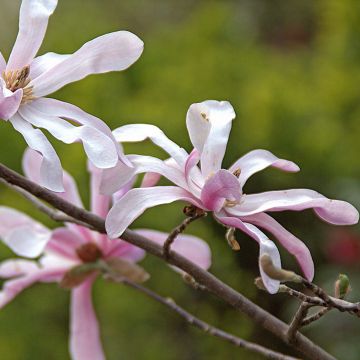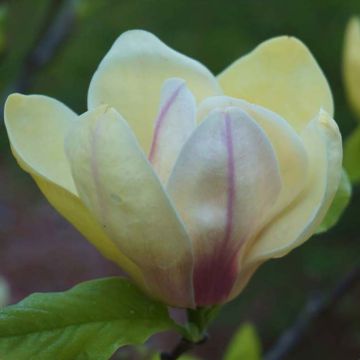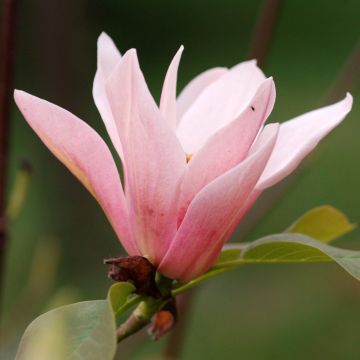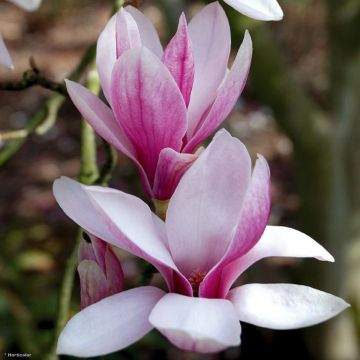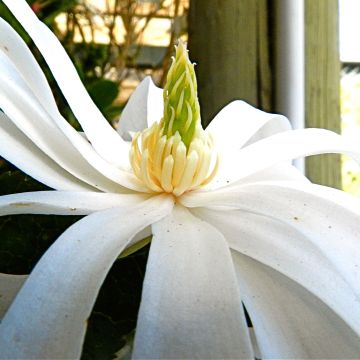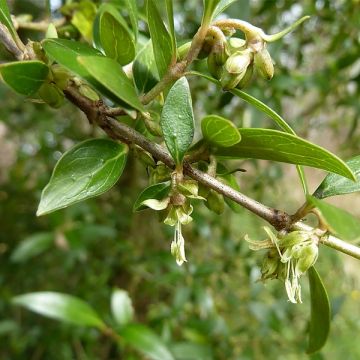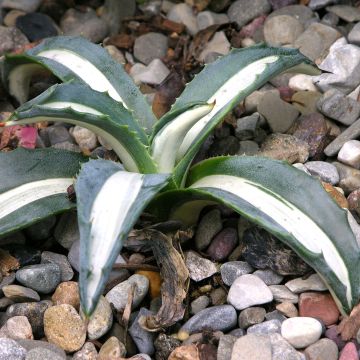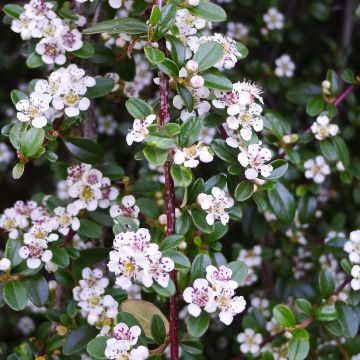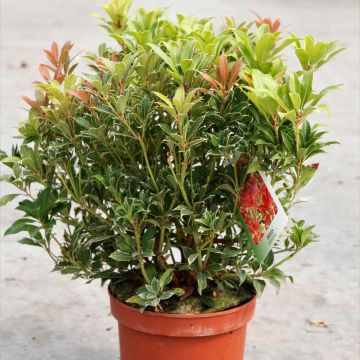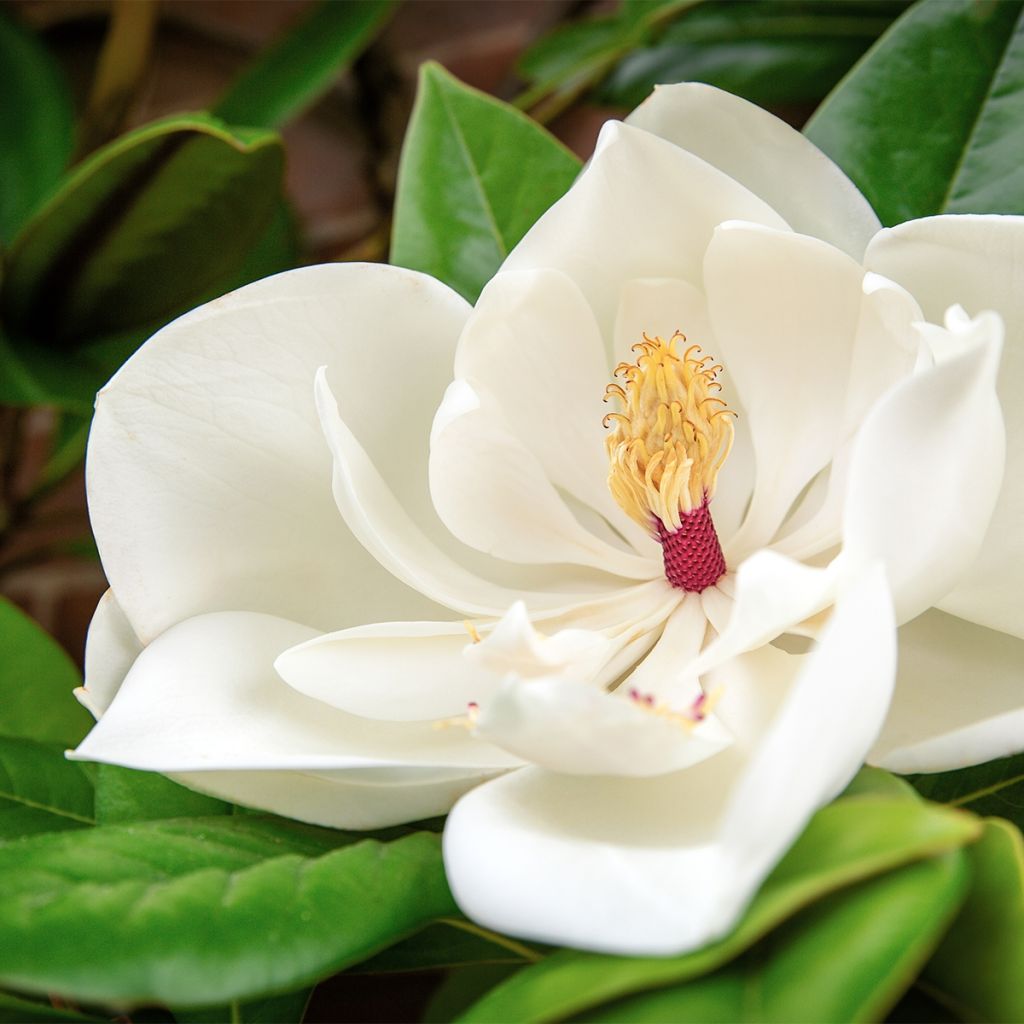

Magnolia grandiflora Goliath
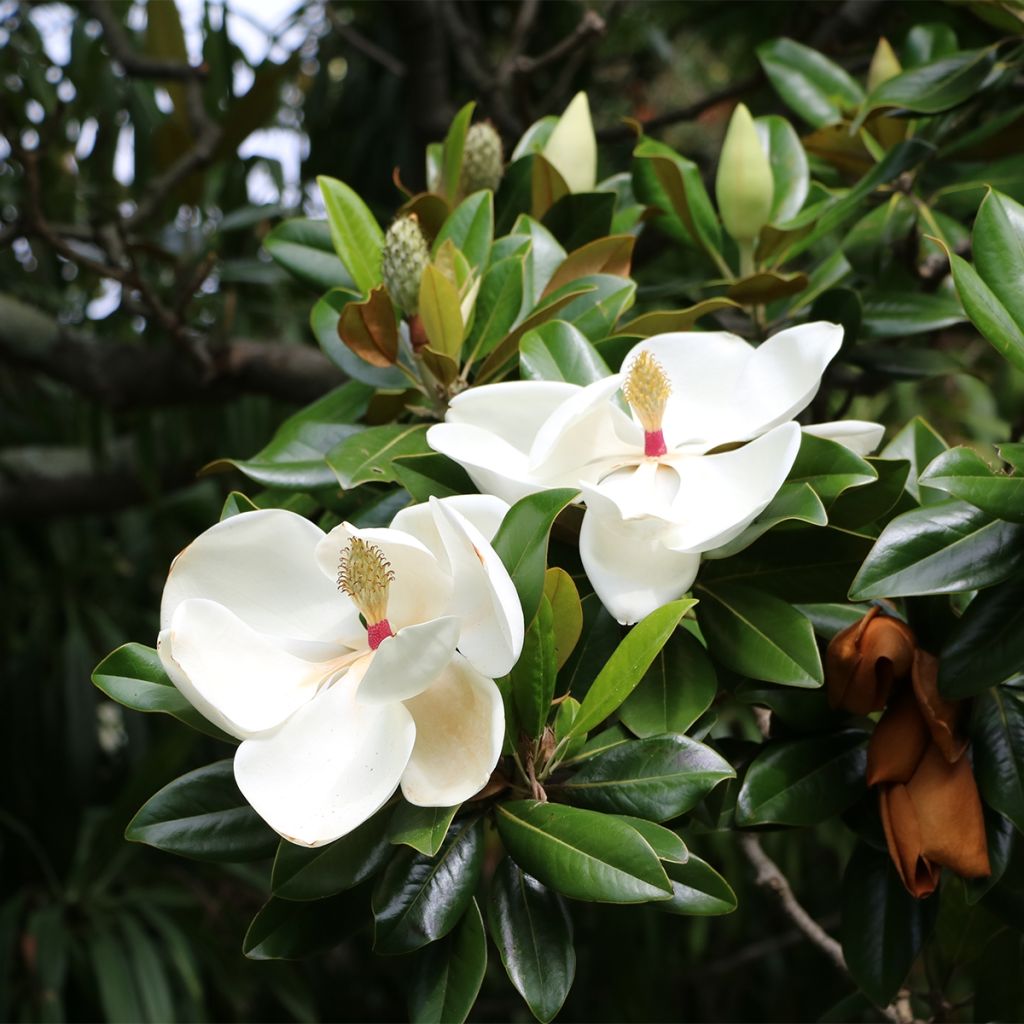

Magnolia grandiflora Goliath
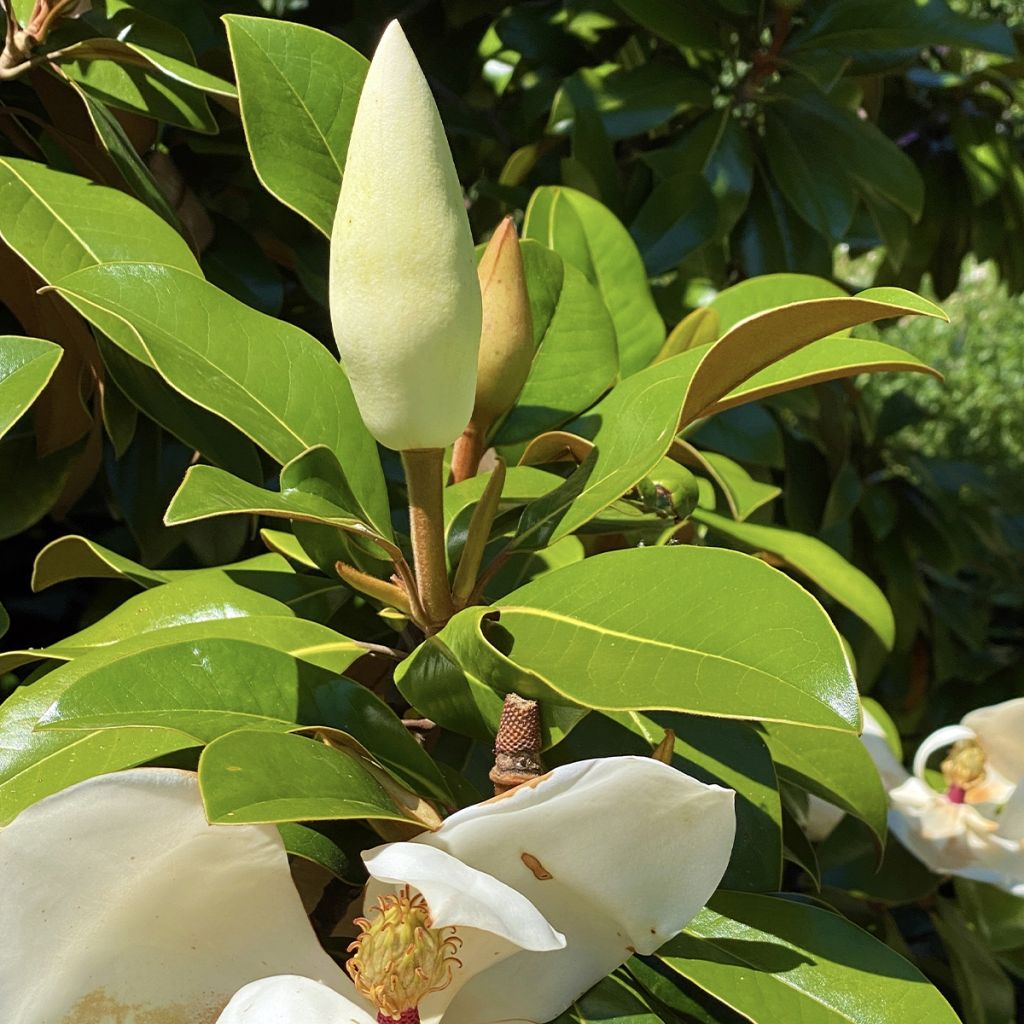

Magnolia grandiflora Goliath
Magnolia grandiflora Goliath
Magnolia grandiflora Goliath
Summer Magnolia, Large-flowered Magnolia, Bull bay Magnolia, Evergreen Magnolia
Why not try an alternative variety in stock?
View all →This plant carries a 24 months recovery warranty
More information
We guarantee the quality of our plants for a full growing cycle, and will replace at our expense any plant that fails to recover under normal climatic and planting conditions.
Oversize package: home delivery by special carrier from €6.90 per order..
Express home delivery from €8.90.
Delivery to Corse prohibited: UE law prohibits the import of this plant from mainland France to Corse as part of the fight against Xylella fastidiosa. Please accept our sincere apologies.
More information
Does this plant fit my garden?
Set up your Plantfit profile →
Description
The Magnolia grandiflora 'Goliath' is a variety with larger flowers than the botanical species. Its impressive white cup-shaped flowers can reach 30 cm (12 in) in diameter! Moreover, they are highly fragrant and bloom throughout the summer for our pleasure. This small tree with relatively slow growth forms a regular pyramid with moderate dimensions, suitable for small gardens.
Magnolia is a member of the small Magnoliaceae family, to which it gave its name, which also includes Tulip Trees (Liriodendron, tall trees with beautiful tulip-shaped flowers). Native to the Southeastern United States, the Magnolia grandiflora likes light, heat, humidity, and rich, deep, preferably non-alkaline soils. Its range extends from Texas to Virginia, through the northern and central parts of Florida.
The 'Goliath' variety was selected in 1910 in a nursery on the island of Guernsey before being introduced to England and then to Europe. Smaller in size than the species, this Magnolia will reach about 6 to 8 m (20 to 26 ft) in height, maximum 10 m (33 ft), with a spread of 4 to 6 m (13 to 20 ft), allowing it to fit into most gardens. This small tree with rather slow growth forms a beautiful evergreen pyramid, with the classic foliage of the species, dark green and glossy on the upper side, but with less pronounced rusty brown on the underside. It is remarkable for the size of its flowers, which appear on relatively young specimens (usually after 3 years). Highly fragrant, they appear from June to late August or September, succeeding each other on the tree and perfuming the garden. The fruits that follow are conical, green-pink in color, composed of scales that separate to reveal red seeds.
Very hardy, this variety can tolerate temperatures down to about -20°C (1°F) in well-drained soil and is generally not susceptible to diseases or insects.
The Magnolia grandiflora 'Goliath' will certainly find its place as a standalone tree, but also in a bed where it will serve as a background element. To create an impressive display, why not create a scene with XXL summer blooms? In the foreground, clumps of Hibiscus moscheutos with their single, brightly colored flowers, larger than a hand, will inevitably attract attention. The second layer could be formed by the remarkable Buddleja davidii Gulliver with its huge mauve-lilac inflorescences, reaching up to 30 cm (12in) in length, as well as the Hydrangea paniculata Hercules with its oversized white panicles (up to 40 cm (16in) long). A spectacular scene that will delight children during the summer!
Report an error about the product description
Magnolia grandiflora Goliath in pictures
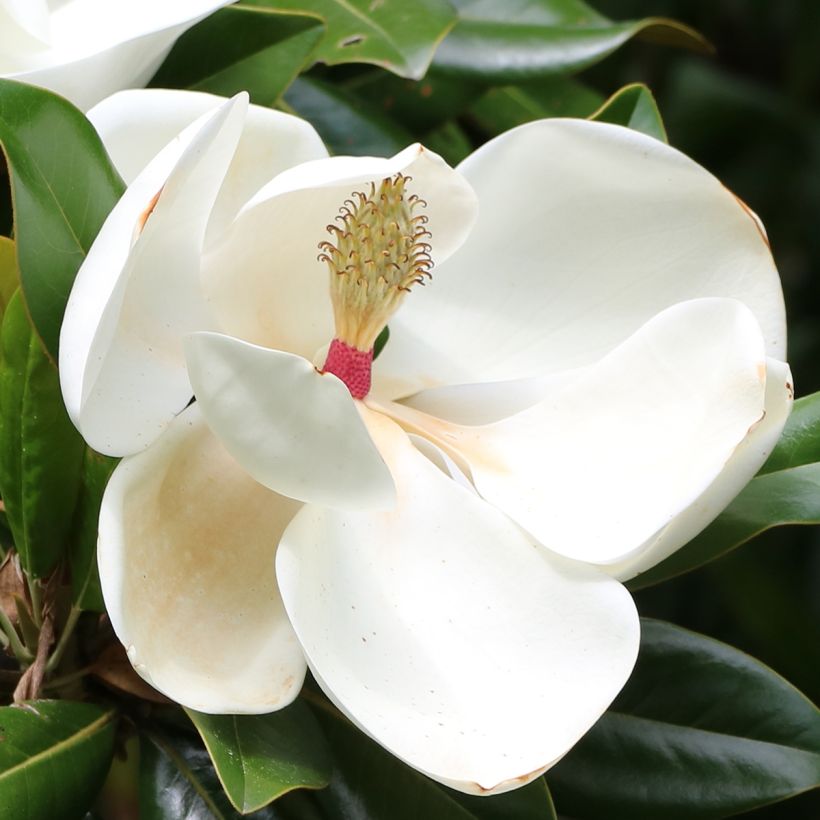

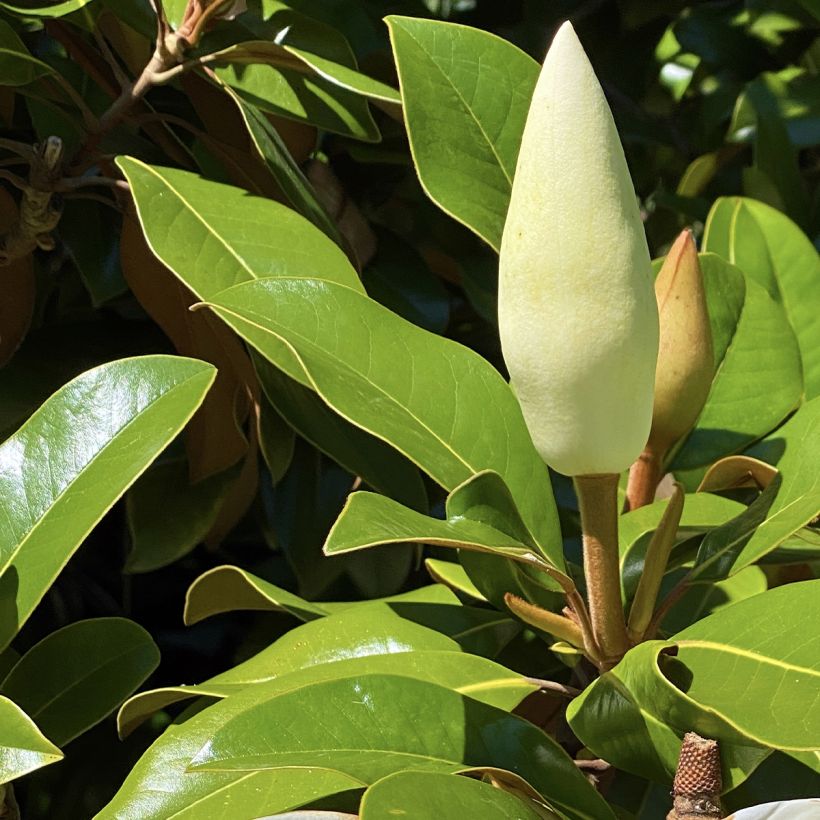

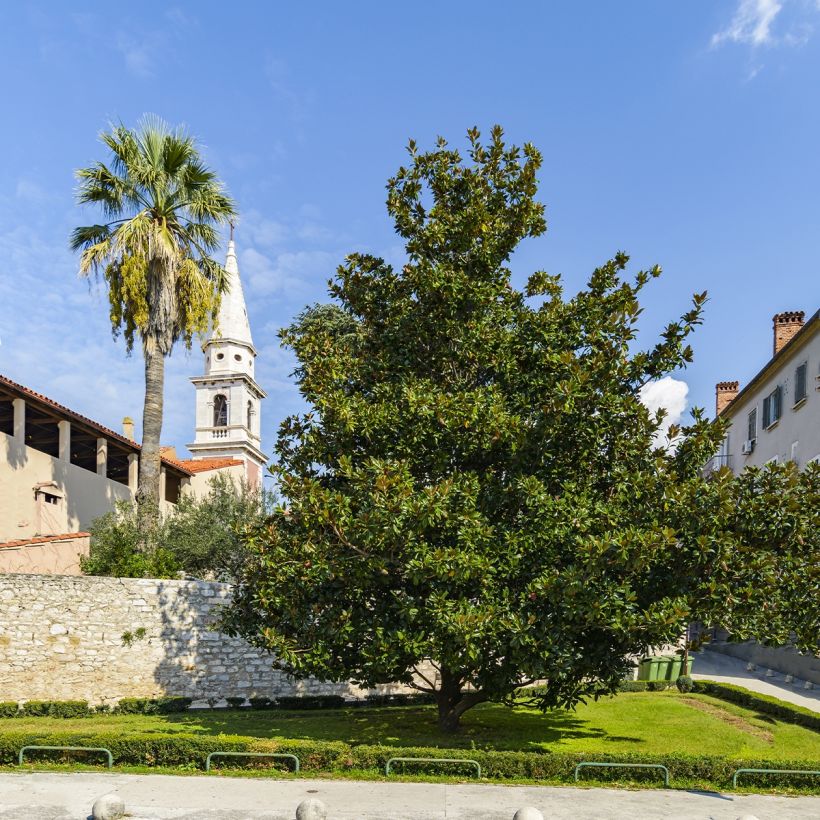

Plant habit
Flowering
Foliage
Botanical data
Magnolia
grandiflora
Goliath
Magnoliaceae
Summer Magnolia, Large-flowered Magnolia, Bull bay Magnolia, Evergreen Magnolia
Cultivar or hybrid
Other Magnolia
Planting and care
Magnolia grandiflora 'Goliath' is preferably planted in the spring in deep, rich, ideally neutral earth, enriched with clay garden soil. Pure ericaceous compost is not recommended, as it is too nutrient-poor. Similarly, avoid limestone soils which it dislikes. It appreciates a sunny and open exposure, sheltered from dominant winds, however. Once well rooted, the bush tolerates dry summers quite well. It is advisable to protect young plants from severe frost in winter during the first two or three years: dress them in a thick winter cover in case of severe frosts, then remove it as soon as the temperatures start to warm up a bit. Weight of snow weakens the branches, which can break. Be careful not to break the fleshy roots and not to bury the root ball too deeply. Mulch and water your young plants regularly in the summer. Pay attention to very hot and dry summers, as this magnolia appreciates the soil remaining slightly moist in summer. Maintain good moisture by showering its foliage with a fine spray, only in the evening. Pruning is unnecessary. If desired, it can be done sparingly just after flowering.
Planting period
Intended location
Care
This item has not been reviewed yet - be the first to leave a review about it.
Evergreen shrubs
Haven't found what you were looking for?
Hardiness is the lowest winter temperature a plant can endure without suffering serious damage or even dying. However, hardiness is affected by location (a sheltered area, such as a patio), protection (winter cover) and soil type (hardiness is improved by well-drained soil).

Photo Sharing Terms & Conditions
In order to encourage gardeners to interact and share their experiences, Promesse de fleurs offers various media enabling content to be uploaded onto its Site - in particular via the ‘Photo sharing’ module.
The User agrees to refrain from:
- Posting any content that is illegal, prejudicial, insulting, racist, inciteful to hatred, revisionist, contrary to public decency, that infringes on privacy or on the privacy rights of third parties, in particular the publicity rights of persons and goods, intellectual property rights, or the right to privacy.
- Submitting content on behalf of a third party;
- Impersonate the identity of a third party and/or publish any personal information about a third party;
In general, the User undertakes to refrain from any unethical behaviour.
All Content (in particular text, comments, files, images, photos, videos, creative works, etc.), which may be subject to property or intellectual property rights, image or other private rights, shall remain the property of the User, subject to the limited rights granted by the terms of the licence granted by Promesse de fleurs as stated below. Users are at liberty to publish or not to publish such Content on the Site, notably via the ‘Photo Sharing’ facility, and accept that this Content shall be made public and freely accessible, notably on the Internet.
Users further acknowledge, undertake to have ,and guarantee that they hold all necessary rights and permissions to publish such material on the Site, in particular with regard to the legislation in force pertaining to any privacy, property, intellectual property, image, or contractual rights, or rights of any other nature. By publishing such Content on the Site, Users acknowledge accepting full liability as publishers of the Content within the meaning of the law, and grant Promesse de fleurs, free of charge, an inclusive, worldwide licence for the said Content for the entire duration of its publication, including all reproduction, representation, up/downloading, displaying, performing, transmission, and storage rights.
Users also grant permission for their name to be linked to the Content and accept that this link may not always be made available.
By engaging in posting material, Users consent to their Content becoming automatically accessible on the Internet, in particular on other sites and/or blogs and/or web pages of the Promesse de fleurs site, including in particular social pages and the Promesse de fleurs catalogue.
Users may secure the removal of entrusted content free of charge by issuing a simple request via our contact form.
The flowering period indicated on our website applies to countries and regions located in USDA zone 8 (France, the United Kingdom, Ireland, the Netherlands, etc.)
It will vary according to where you live:
- In zones 9 to 10 (Italy, Spain, Greece, etc.), flowering will occur about 2 to 4 weeks earlier.
- In zones 6 to 7 (Germany, Poland, Slovenia, and lower mountainous regions), flowering will be delayed by 2 to 3 weeks.
- In zone 5 (Central Europe, Scandinavia), blooming will be delayed by 3 to 5 weeks.
In temperate climates, pruning of spring-flowering shrubs (forsythia, spireas, etc.) should be done just after flowering.
Pruning of summer-flowering shrubs (Indian Lilac, Perovskia, etc.) can be done in winter or spring.
In cold regions as well as with frost-sensitive plants, avoid pruning too early when severe frosts may still occur.
The planting period indicated on our website applies to countries and regions located in USDA zone 8 (France, United Kingdom, Ireland, Netherlands).
It will vary according to where you live:
- In Mediterranean zones (Marseille, Madrid, Milan, etc.), autumn and winter are the best planting periods.
- In continental zones (Strasbourg, Munich, Vienna, etc.), delay planting by 2 to 3 weeks in spring and bring it forward by 2 to 4 weeks in autumn.
- In mountainous regions (the Alps, Pyrenees, Carpathians, etc.), it is best to plant in late spring (May-June) or late summer (August-September).
The harvesting period indicated on our website applies to countries and regions in USDA zone 8 (France, England, Ireland, the Netherlands).
In colder areas (Scandinavia, Poland, Austria...) fruit and vegetable harvests are likely to be delayed by 3-4 weeks.
In warmer areas (Italy, Spain, Greece, etc.), harvesting will probably take place earlier, depending on weather conditions.
The sowing periods indicated on our website apply to countries and regions within USDA Zone 8 (France, UK, Ireland, Netherlands).
In colder areas (Scandinavia, Poland, Austria...), delay any outdoor sowing by 3-4 weeks, or sow under glass.
In warmer climes (Italy, Spain, Greece, etc.), bring outdoor sowing forward by a few weeks.

































